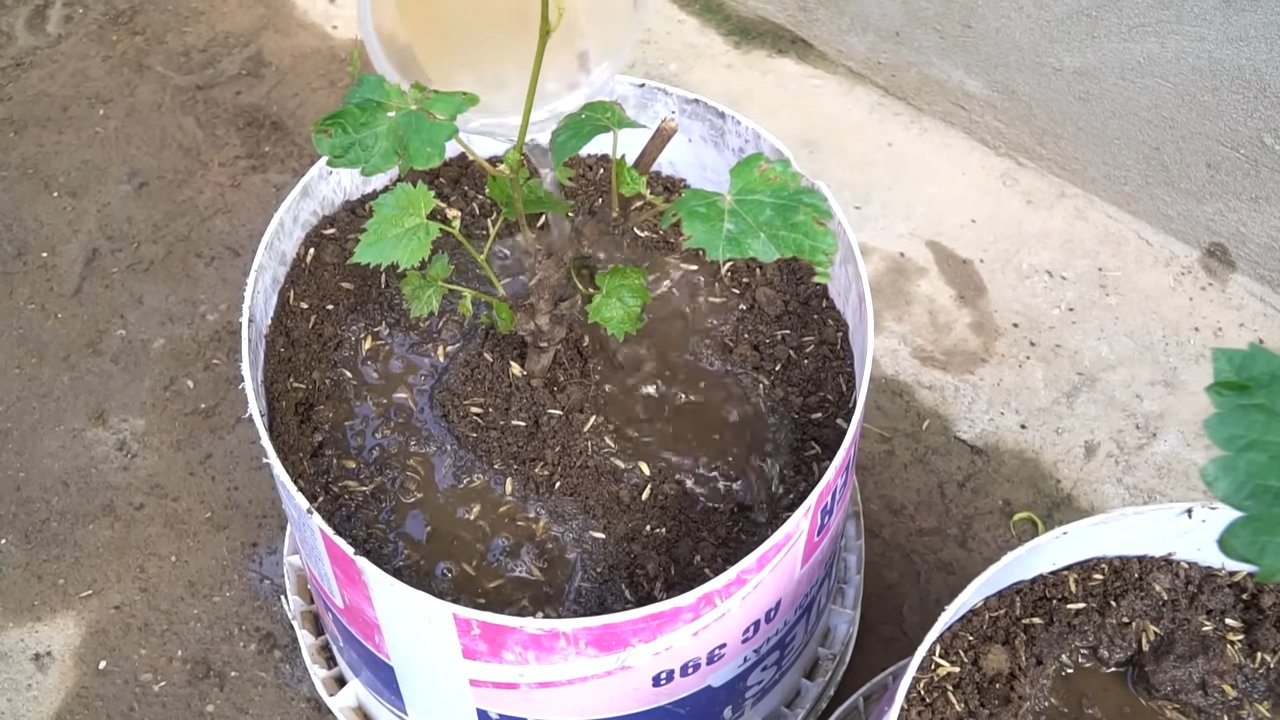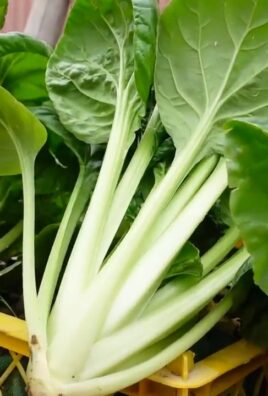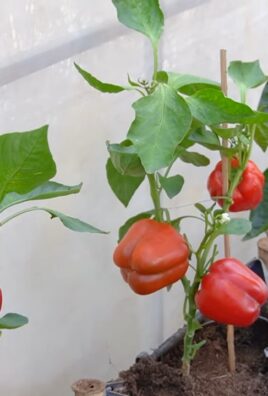Grow grapes at home? Absolutely! Imagine stepping into your backyard and plucking juicy, sun-ripened grapes straight from the vine. Sounds like a dream, right? Well, it doesn’t have to be! This DIY guide is packed with simple tricks and hacks to help you cultivate your own thriving grapevine, even if you’re a complete beginner.
Grape cultivation has a rich history, dating back thousands of years. From ancient civilizations using grapes for wine production to families passing down their grape-growing secrets through generations, this fruit has always held a special place in our hearts and cultures. Today, you don’t need a sprawling vineyard to enjoy the fruits (pun intended!) of your labor.
Why should you learn to grow grapes at home? Because it’s incredibly rewarding! Not only will you have access to fresh, delicious grapes for snacking, juicing, or even winemaking, but you’ll also enjoy the satisfaction of nurturing a plant from start to finish. Plus, growing your own food is a fantastic way to connect with nature, reduce your carbon footprint, and save money on groceries. Let’s dive in and discover the secrets to successful home grape growing!

DIY: Your Own Vineyard – How to Grow Grapes at Home!
Hey wine lovers! Have you ever dreamed of growing your own grapes and maybe even making your own wine? Sounds like a lot of work, right? But don’t worry, it’s easier than you think! I’ll show you how you can start your own little vineyard at home with a bit of patience and the right steps. Whether in the garden, on the balcony, or even on the terrace—growing grapes is feasible even for beginners. Let’s get started!
What You Need for Growing Grapes:
Before we start, here is a list of the things you’ll need:
- Grapevine: Choose a variety that is suitable for your climate. It’s best to get information from a nursery or online. Look for resistance to diseases.
- Planter (optional): If you don’t have a garden, you’ll need a large pot or container with sufficient drainage.
- Trellis/Support: Grapes need something to climb on. A trellis, a fence, or a pergola is perfect.
- Good soil: Use a well-draining, nutrient-rich soil. Special potting soil for grapevines is ideal.
- Garden shears: For pruning the vine.
- Fertilizer: Special fertilizer for grapevines or compost.
- Watering can or hose: For watering.
- Mulch (optional): Helps to retain moisture in the soil and suppress weeds.
- Patience: Grapes take time to grow and bear fruit.
Choosing the Right Grape Variety:
Choosing the right grape variety is crucial for the success of your small vineyard. Here are some tips:
- Climate: Find out which varieties thrive in your region. Ask at a local nursery.
- Resistance: Choose varieties that are resistant to common diseases like mildew. This will save you a lot of work and trouble.
- Taste: Think about what kind of grapes you like to eat or want to use for wine. There are sweet table grapes, tart wine grapes, and many other varieties.
- Space: Some grape varieties grow very vigorously, while others remain more compact. Choose a variety that fits your available space.
Step-by-Step Guide to Growing Grapes:
Here is a detailed guide on how to grow your own grapes:
1. Finding the Right Location:
Grapes love the sun! Choose a location that gets at least 6-8 hours of sunlight per day. A sunny, warm spot is ideal. Make sure the soil is well-draining to prevent waterlogging. If you are planting in a pot, ensure the pot has holes in the bottom so water can drain.
2. Preparing the Vine:
If you bought a bare-root vine (a vine without a pot), you should place it in water for a few hours before planting. This helps it to soak up moisture. If you bought a vine in a pot, you can plant it directly.
3. Preparing the Planting Hole:
Dig a hole that is twice as wide and deep as the root ball of the vine. Loosen the soil at the bottom of the hole well. Mix some compost or organic fertilizer into the soil to provide the vine with nutrients.
4. Planting the Vine:
Place the vine in the hole, making sure that the graft union (the point where the vine was grafted onto the rootstock) is about 5-10 cm (2-4 inches) above the soil surface. Fill the hole with soil and press it down lightly. Water the vine thoroughly.
5. Installing the Trellis:
Grapes need something to climb on. Install a trellis near the vine. This can be a lattice, a fence, or a pergola. Carefully attach the vine to the trellis.
6. Watering:
Water the vine regularly, especially in the first few weeks after planting. Make sure the soil is moist but not wet. Avoid waterlogging.
7. Fertilizing:
Fertilize the vine in the spring with a special fertilizer for grapevines or with compost. Follow the instructions on the fertilizer package.
8. Pruning:
Pruning is important to maintain the shape of the vine and to promote fruit production. Prune the vine in the winter when it is dormant. Learn about the correct pruning technique for your grape variety. There are different pruning methods, such as spur pruning or cane pruning.
9. Protection from Diseases and Pests:
Observe the vine regularly for signs of diseases or pests. If necessary, you can use biological pesticides.
10. Harvest:
The harvest time depends on the grape variety and the climate. Generally, the grapes are ripe in late summer or fall. Taste the grapes to determine if they are sweet enough.
Special Tips for Growing in a Pot:
If you are growing your grapes in a pot, there are a few things to consider:
- Pot size: Choose a large pot with at least a 50-liter (13-gallon) capacity.
- Drainage: Ensure good drainage to prevent waterlogging. Place a layer of gravel or clay shards at the bottom of the pot.
- Soil: Use a high-quality potting soil for grapevines.
- Watering: Water the vine regularly, especially in the summer. The pot dries out faster than the garden soil.
- Fertilizing: Fertilize the vine regularly with a liquid fertilizer for grapevines.
- Overwintering: In winter, move the pot to a protected place, such as a garage or a basement. Water the vine only a little, so the soil does not dry out.
Common Problems and Solutions:
Problems can also occur when growing grapes. Here are some common problems and how you can solve them:
- Mildew: Mildew is a fungal disease that appears as a white coating on the leaves and grapes. Spray the vine with a biological fungicide. Ensure good ventilation of the vine.
- Aphids: Aphids suck the sap from the leaves and can weaken the vine. Spray the vine with an insecticide or use beneficial insects like ladybugs.
- Bird damage: Birds love grapes! Protect your grapes with a net.
- Sunburn: In strong sunlight, the grapes can get sunburned. Protect the grapes with a shade net.
The Right Pruning – How to Shape Your Vine:
Pruning is the key to a bountiful harvest. Here is a brief overview:
- Winter pruning: The main pruning is done in the winter when the vine is dormant. Remove all dead, diseased, or damaged shoots. Shorten the remaining shoots back to a few buds.
- Summer pruning: In the summer, you can thin out the vine to improve ventilation and increase sun exposure. Remove excess leaves and side shoots.
The Harvest – The Reward for Your Effort:
The time has finally come! The grapes are ripe, and you can harvest them. Look for the following signs:
Taste: The grapes are sweet and aromatic.
Color: The grapes have reached their typical color.

Conclusion
So, there you have it! Growing grapes at home might seem daunting at first, but with a little patience, the right knowledge, and this simple DIY trick, you can transform your backyard into a miniature vineyard. Imagine the satisfaction of harvesting your own juicy, sun-ripened grapes, knowing you nurtured them from vine to table. It’s an experience that connects you to nature, provides fresh, healthy fruit, and adds a touch of rustic charm to your home.
This DIY trick, focusing on [specific trick mentioned throughout the article, e.g., “vertical training” or “homemade fertilizer”], is a game-changer because it addresses [mention the key problem it solves, e.g., “space constraints” or “nutrient deficiencies”]. It simplifies the process, making it accessible even to beginner gardeners. No more relying solely on expensive store-bought fertilizers or struggling with sprawling, unmanageable vines. This method empowers you to take control of your grape-growing journey.
But don’t stop there! Experiment with different grape varieties to find the perfect flavor profile for your taste. Try using different types of supports for your vines, from traditional trellises to repurposed materials like old ladders or even sturdy branches. Consider companion planting with herbs like basil or rosemary to deter pests and enhance the flavor of your grapes. You could even explore different methods of propagation, such as taking cuttings from your existing vines to create new plants. The possibilities are endless!
Growing grapes at home is more than just a gardening project; it’s an investment in your well-being and a celebration of the natural world. It’s a chance to learn new skills, connect with your surroundings, and enjoy the fruits (literally!) of your labor.
We’re confident that this DIY trick will make growing grapes at home easier and more rewarding than you ever thought possible. So, grab your gardening gloves, gather your supplies, and get ready to embark on this exciting adventure.
We can’t wait to hear about your experiences! Share your photos, tips, and challenges in the comments below. Let’s create a community of home grape growers, supporting each other and celebrating our successes. Happy growing!
Frequently Asked Questions (FAQ)
What are the best grape varieties to grow at home for beginners?
Choosing the right grape variety is crucial for success, especially for beginners. Look for varieties that are disease-resistant and well-suited to your local climate. Some excellent options for beginners include:
* **’Reliance’:** A seedless red grape that is very cold-hardy and disease-resistant. It’s a great choice for colder climates.
* **’Concord’:** A classic blue-purple grape with a distinctive flavor, perfect for juice and jelly. It’s relatively easy to grow and widely available.
* **’Niagara’:** A white grape with a sweet, musky flavor. It’s a good choice for fresh eating and making juice.
* **’Thompson Seedless’:** A popular green grape that is widely available in supermarkets. While it can be more challenging to grow than some other varieties, it’s still a good option for those who want a familiar flavor.
* **’Mars’:** A seedless blue grape that is disease-resistant and produces large clusters of fruit.
Before selecting a variety, research its specific needs and ensure it’s compatible with your local growing conditions. Your local nursery or agricultural extension office can provide valuable advice.
How much sunlight do grapevines need?
Grapevines require at least 6-8 hours of direct sunlight per day to thrive. Sunlight is essential for photosynthesis, which is the process by which plants convert sunlight into energy. Insufficient sunlight can lead to poor fruit production, weak growth, and increased susceptibility to diseases. Choose a planting location that receives ample sunlight throughout the day. If you live in a particularly hot climate, some afternoon shade may be beneficial to prevent sunburn on the grapes.
What type of soil is best for growing grapes?
Grapes prefer well-drained soil with a slightly acidic to neutral pH (between 6.0 and 7.0). Good drainage is crucial to prevent root rot, a common problem for grapevines. If your soil is heavy clay, amend it with organic matter such as compost or well-rotted manure to improve drainage and aeration. Sandy soils may need to be amended with organic matter to improve water retention. A soil test can help you determine the pH and nutrient content of your soil and identify any necessary amendments.
How often should I water my grapevines?
Watering frequency depends on several factors, including the climate, soil type, and age of the vine. Young grapevines need more frequent watering than established vines. In general, water deeply but infrequently, allowing the soil to dry out slightly between waterings. During hot, dry periods, you may need to water more frequently. Avoid overwatering, as this can lead to root rot. A good rule of thumb is to water when the top inch of soil feels dry to the touch.
How do I prune my grapevines?
Pruning is essential for maintaining the health and productivity of your grapevines. It helps to control the size and shape of the vine, improve air circulation, and promote fruit production. The best time to prune grapevines is during the dormant season, typically in late winter or early spring before new growth begins. The specific pruning method will depend on the grape variety and the training system you are using. Research the appropriate pruning techniques for your specific grape variety and training system. There are many helpful resources available online and at your local library.
How do I protect my grapes from pests and diseases?
Grapes can be susceptible to various pests and diseases, including Japanese beetles, grape phylloxera, powdery mildew, and black rot. Implementing preventative measures is the best way to protect your vines. These measures include:
* **Choosing disease-resistant varieties:** Select grape varieties that are known to be resistant to common diseases in your area.
* **Providing good air circulation:** Prune your vines regularly to improve air circulation and reduce humidity, which can help prevent fungal diseases.
* **Maintaining good soil health:** Healthy soil promotes strong, healthy vines that are more resistant to pests and diseases.
* **Using organic pest control methods:** Consider using organic pest control methods such as insecticidal soap or neem oil to control pests.
* **Removing diseased leaves and fruit:** Regularly inspect your vines for signs of pests or diseases and remove any affected leaves or fruit.
If you encounter a serious pest or disease problem, consult with your local agricultural extension office for advice on appropriate treatment options.
Can I grow grapes in containers?
Yes, you can grow grapes in containers, but it requires careful planning and attention. Choose a large container (at least 20 gallons) with good drainage. Select a dwarf or compact grape variety that is well-suited to container growing. Use a high-quality potting mix and provide regular watering and fertilization. Container-grown grapes may need to be pruned more frequently than those grown in the ground. Be aware that container-grown grapes may be more susceptible to temperature fluctuations and may need to be protected from extreme heat or cold.
How long does it take for grapevines to produce fruit?
Grapevines typically take 2-3 years to begin producing fruit. The first year is focused on establishing the root system and developing the main trunk. In the second year, the vine will begin to produce more foliage and may produce a small amount of fruit. By the third year, the vine should be producing a significant amount of fruit. The amount of fruit will continue to increase as the vine matures.
What is the best way to support my grapevines?
Grapevines need support to grow properly and produce fruit. There are several different training systems you can use, including:
* **Trellis:** A trellis is a structure made of posts and wires that provides support for the vines.
* **Arbor:** An arbor is a covered structure that provides shade and support for the vines.
* **Fence:** A fence can be used to support grapevines, especially if you are growing them along a property line.
* **Pergola:** A pergola is a structure with a framework that supports climbing plants, including grapevines.
Choose a training system that is appropriate for your grape variety and your growing space. Ensure that the support structure is strong enough to support the weight of the vines and the fruit.





Leave a Comment